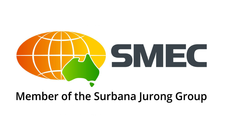Sleep cities’ no longer an option for urban development
| Sleep cities no longer an option for urban development | 28 KB | Download | |
| Marius Kannenberg, Functional GM, Urban Development, SMEC South Africa. | 1.82 MB | Download | |
| The Cornubia Precinct near Durban is a flagship mixed-use development. | 7.17 MB | Download | |
| Urban development is linked to infrastructure such as power generation. Seen here is a solar-power plant for Valpre. | 423.25 KB | Download |
Urban development in general has important links with all forms of infrastructure, from the provision of bulk services such as water, electricity and sewage treatment, to mobility issues such as road, rail and air links to connect development nodes.
An integrated approach is essential to create sustainable developments. However, the importance of economic infrastructure should not be neglected, as this forms a vital part of urban developments. Sustainability is a critical element of urban development in general.
“In the process of creating living spaces for our communities, it is essential to ensure that developments are sustainable, and that they cater for all the needs of their inhabitants, from social and educational to economic,” argues Marius Kannenberg, Functional GM, Urban Development, SMEC South Africa.
The company has expertise in the provision of integrated services for major urban development projects, ranging from high-value single and mixed-use developments to affordable and sustainable housing for both public and private sector clients.
It focuses on the delivery of municipal infrastructure services, building structure design, mechanical services for buildings, prefeasibility and feasibility studies, field investigation, urban design, planning approvals, computer modelling, preparation of tender and contract documents, tender evaluation, contract management, construction supervision, quality assurance and overall project management.
Within Urban Development, SMEC South Africa’s capabilities extend through all project stages, from conception to completion. “Our team consists of talented and experienced individuals dedicated to ensuring that each client receives only the best service,” stresses Kannenberg.
An example of a current project that the company is involved with is the Cornubia Precinct north of Durban, a flagship development in KwaZulu-Natal. This is an ongoing project where 1 300 ha of existing farmland is being developed into a variety of land uses such as industrial, commercial, mixed-use and housing.
“Various projects covering the whole spectrum from bottling plants to shopping centres and housing projects have been completed successfully over the whole of South Africa in the recent past,” Kannenberg concludes.
Ends
Notes to the editor
To download hi-res images for this release, please visit http://media.ngage.co.za and click on the SMEC link to view the company’s press office.
About SMEC South Africa
SMEC South Africa provides consultancy services for the lifecycle of a project to a broad range of sectors, which include; hydropower, transport, water, natural resources and environment, geotechnical, mining, tunnelling, urban development, renewable energy, power, government and advisory services and social infrastructure development. The SMEC Group has over 5 300 employees and an established network of over 75 offices throughout Australia, Africa, Asia, the Middle East, the Pacific, North and South America.
Media Contact
Mmule Ncongwane
NGAGE Public Relations
Phone: (011) 867-7763
Fax: 086 512 3352
Cell: 083 661 8751
Email: mmule [at] ngage [dot] co [dot] za
Web: www.ngage.co.za
Browse the NGAGE Media Zone for more client press releases and photographs at http://media.ngage.co.za

